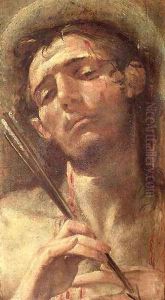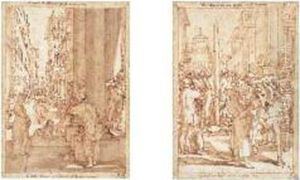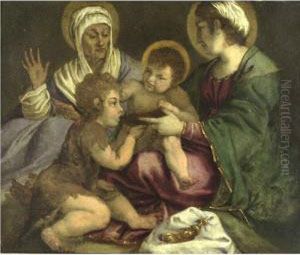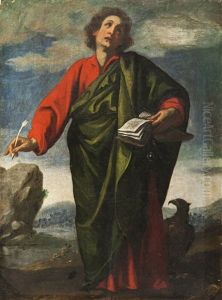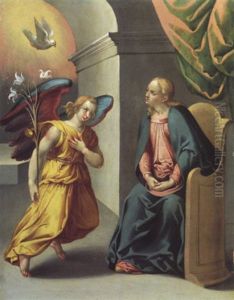Andrea Boscoli Paintings
Andrea Boscoli was an Italian painter of the Renaissance period, active mainly in Florence and Rome. He was born in Florence around 1560 and was initially trained by Santi di Tito, an Italian painter associated with the Counter-Mannerism movement. Boscoli's early works show the influence of his teacher and the Florentine tradition, characterized by a more restrained mannerism compared to the flamboyant style that was prevalent in the late 16th century.
Boscoli traveled extensively in Italy, which allowed him to absorb a wide range of artistic influences. He spent significant periods of time in Rome, where he became acquainted with the works of Raphael and the classical antiquities. This exposure contributed to the development of his own style, which combined elements of mannerism with a growing interest in naturalism and classical balance.
One of the most distinctive features of Boscoli's art is his draughtsmanship. He was an excellent draftsman, and his drawings are often regarded as more significant than his paintings. They show his keen interest in anatomy and his ability to capture movement and emotion. Boscoli's drawings were highly valued during his lifetime and were collected by prominent patrons.
Although Boscoli was not as famous as some of his contemporaries, he was respected by his peers and received important commissions. His works include altarpieces, frescoes, and small-scale religious compositions. Unfortunately, much of his painted work has not survived or has been attributed to other artists, which makes his contribution to the art of the period less well-known to modern audiences.
Boscoli's career also reflects the changing artistic climate at the turn of the 17th century, as the exuberant style of the High Renaissance gave way to the more sober and dramatic approach of the Baroque. He died in Florence in 1607, leaving behind a body of work that, while not extensive, provides valuable insights into the transition between the Renaissance and the Baroque periods in Italian art.
